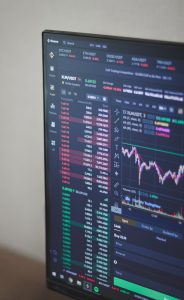Forex trading is the buying and selling of currencies in the foreign exchange market. It is a highly lucrative market that generates trillions of dollars in daily trading volume, making it one of the largest financial markets in the world. Forex trading offers many opportunities for traders to make profits, but it also requires a lot of knowledge, skill, and discipline to be successful. In this article, we will explore the basics of forex trading and the steps involved in learning how to trade forex.
Understanding the Forex Market
The forex market is a decentralized market where currencies are traded around the clock, five days a week. The most traded currencies in the forex market are the US dollar, euro, Japanese yen, British pound, Swiss franc, Canadian dollar, and Australian dollar. The forex market operates on a global scale, with traders from all over the world participating in currency trading. The market is influenced by various factors such as economic indicators, geopolitical events, and central bank policies.
Learning the Basics of Forex Trading
Before you start trading forex, it is essential to learn the basics of the market. You need to understand the different terminologies used in forex trading, such as pips, lots, and leverage. Pips are the smallest unit of measurement for currency pairs, and they represent the change in the exchange rate. A lot is the standard unit of measurement for forex trading, and a standard lot represents 100,000 units of the base currency. Leverage is the amount of money you can borrow from your broker to increase your trading position.
You also need to understand the different types of forex orders, such as market orders, limit orders, and stop-loss orders. A market order is an order to buy or sell a currency pair at the current market price. A limit order is an order to buy or sell a currency pair at a specific price. A stop-loss order is an order to close a trade when the price reaches a predetermined level to limit losses.
Developing a Trading Plan
Once you have a good understanding of the basics of forex trading, you need to develop a trading plan. A trading plan is a set of rules and guidelines that you will use to guide your trading decisions. It should include your trading goals, trading strategy, risk management plan, and trading journal. Your trading goals should be specific, measurable, achievable, realistic, and time-bound. Your trading strategy should include your entry and exit points, the currency pairs you will trade, and the indicators you will use to analyze the market.
Risk Management
Risk management is an essential aspect of forex trading. It involves managing your risk exposure to protect your trading capital. You should never risk more than you can afford to lose, and you should always use stop-loss orders to limit your losses. You should also diversify your trading portfolio by trading different currency pairs and using different trading strategies.
Practicing and Reviewing
Practice makes perfect. To become a successful forex trader, you need to practice your trading strategy on a demo account before trading with real money. A demo account allows you to test your trading strategy in a risk-free environment. You should also review your trading journal regularly to analyze your trading performance and identify areas for improvement. Keeping a trading journal will help you track your progress and learn from your mistakes.
Conclusion
Learning how to trade forex requires time, effort, and dedication. It is not a get-rich-quick scheme, but it can be a profitable venture if you approach it with the right mindset and strategy. Understanding the basics of forex trading, developing a trading plan, managing your risk, and practicing your trading strategy are essential steps to becoming a successful forex trader. With patience and discipline, you can master the art of forex trading and achieve your financial goals.





